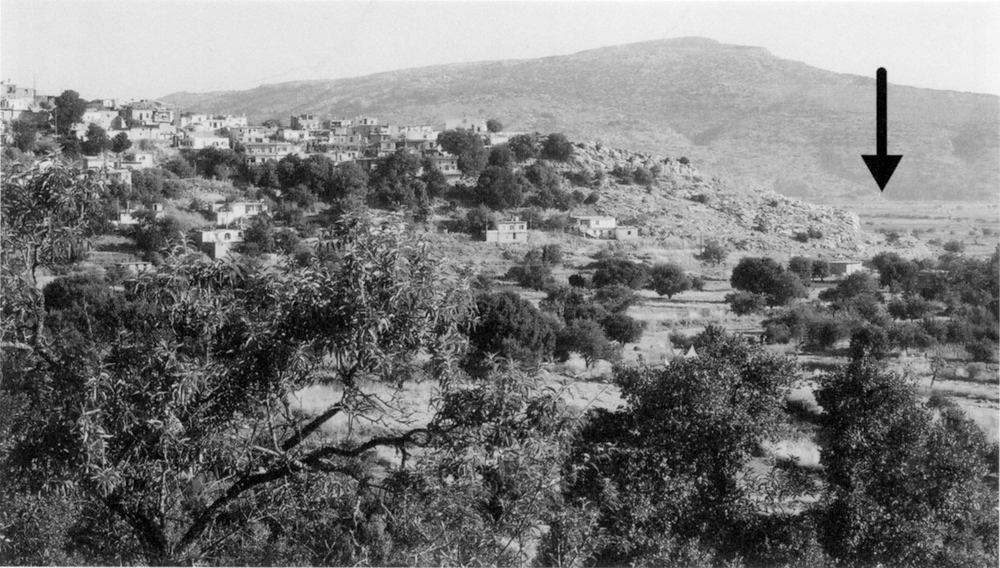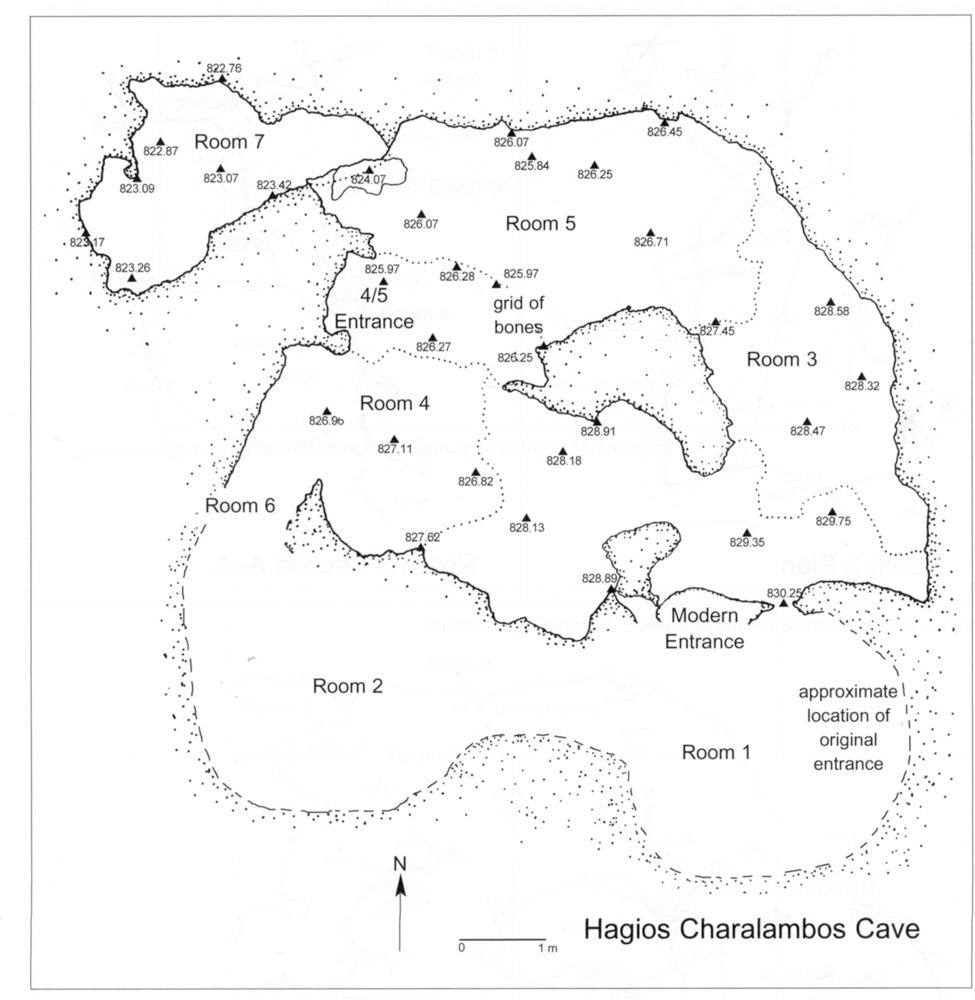The Hagios Charalambos Cave is located on the western side of the Lasithi Plain in a bedrock outcrop (entrance 834.95 m above sea level) to the northeast of the village of the same name (Hagios Charalambos).

Excavations were conducted in 1976, 1982, and 1983 under the direction of Costis Davaras, in 2002 under the direction of Philip P. Betancourt and Costis Davaras, and in 2003 under the direction of Philip P. Betancourt, Costis Davaras, and Eleni Stravopodi.
The earliest finds from the cavern, which likely represent activity in the open air near the mouth rather than the interior of the cave, consist of Final Neolithic pottery. The cave itself is comprised of seven small interconnected chambers, five of which were used in the Middle Minoan (MM) IIB period as an ossuary for the secondary burial of human remains and grave goods; these remains had been removed from earlier burials (primarily Early and Middle Bronze Age) originally made in different location(s).

The human remains consist of hundreds of individuals of all age groups, ranging from infants to adults, both male and female. Grave goods include: clay and stone vases; larnax fragments; seals; seal rings; figurines; gold, silver, lead, copper, ivory, bone, and stone jewelry; tools and weapons of stone and metal; and fragments of six clay sistra. Charcoal from fires, several animal bones, and vessels for eating and drinking—all found at the mouth of the cave—likely derive from ceremonies or feasts associated with the interment of bones and grave goods inside the cave. A very small amount of MM III–Late Minoan (LM) I material indicates that the cave remained open only for a short time after the deposit was made in MM IIB, before being permanently sealed at the end of the Late Bronze Age. The cave was only rediscovered in 1976 as a result of blasting with dynamite for road work.
Although the Hagios Charalambos Cave is adjacent to the modern highway (not visible from the road, but on a small terrace above road level), it is not currently accessible as it has been closed with a stone and concrete wall.




Slide show from left to right (click on each photo to enlarge): four photos showing the excavation, washing, study, and photography of the human remains found in the cave.
Selected References
Betancourt, P.P. 2014. Hagios Charalambos: A Minoan Burial Cave in Crete I : Excavation and Portable Objects (Prehistory Monographs 47), Philadelphia.
Betancourt, P.P., C. Davaras, H.M.C. Dierckx, S.C. Ferrence, J. Hickman, P. Karkanas, P.J.P. McGeorge, J.D. Muhly, D.S. Reese, E. Stravopodi, and L. Langford-Verstegen. 2008. “Excavations in the Hagios Charalambos Cave: A Preliminary Report,” Hesperia 77, pp. 539–605.
Langford-Verstegen, L.C. 2015. Hagios Charalambos: A Minoan Burial Cave in Crete II: The Pottery (Prehistory Monographs 51), Philadelphia.
For further information, see articles in Kentro 5 and Kentro 6.
